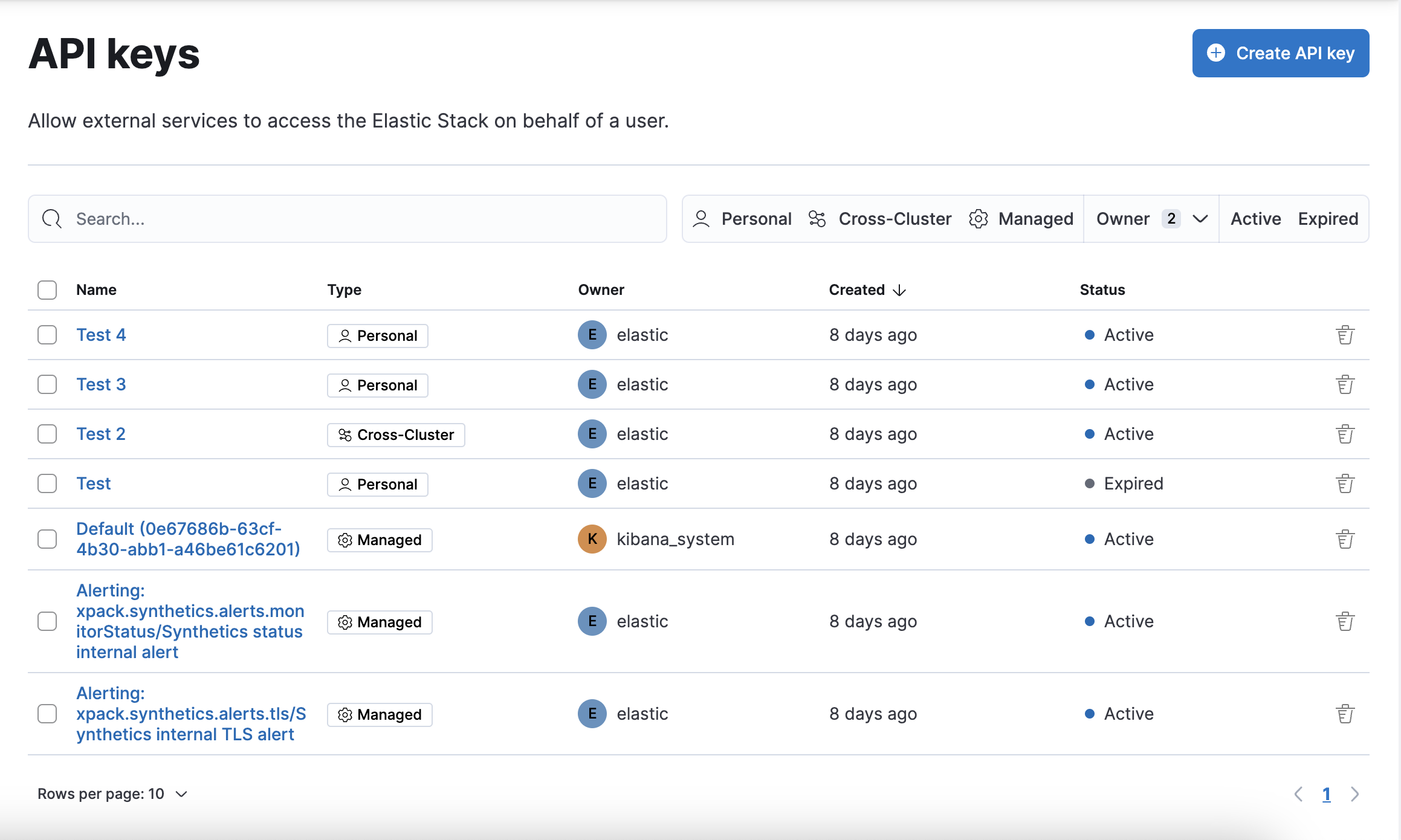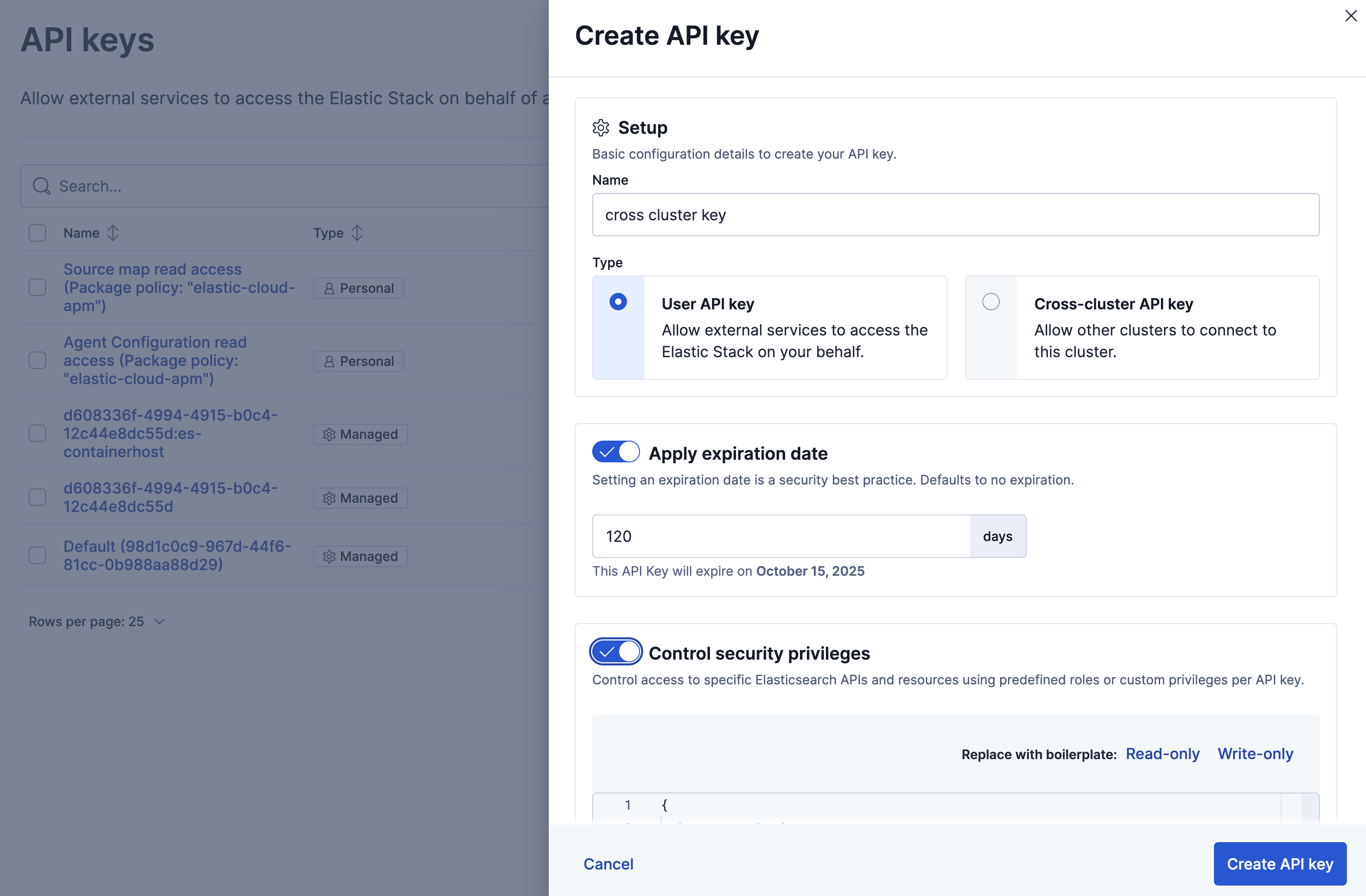Elasticsearch API keys
Several types of Elasticsearch API keys exist:
- Personal/User API key: allows external services to access the Elastic Stack on behalf of a user.
- Cross-cluster API key: allows other clusters to connect to this cluster.
- Managed API key: created and managed by Kibana to run background tasks.
To manage API keys in Kibana, go to the API keys management page in the navigation menu or use the global search field.

- To use API keys in Kibana, you must have the
manage_security,manage_api_key, or themanage_own_api_keycluster privileges. - To delete API keys, you must have the
manage_api_keyormanage_own_api_keyprivileges. - To create or update a user API key, you must have the
manage_api_keyor themanage_own_api_keyprivilege. - To create or update a cross-cluster API key, you must have the
manage_securityprivilege and an Enterprise license. - To have a read-only view on the API keys, you must have access to the page and the
read_securitycluster privilege.
To manage roles, go to the Roles management page using the navigation menu or the global search field, or use the role APIs.
Two methods are available to create an API key:
As a quick option to create a personal API key from anywhere in Kibana:
- From the Help menu (
), select Connection details > API key.
- Give the key a name.
- Select Create API key.
Your personal API key is created with a default expiration of 90 days from the time of creation. You can manage the key from the API Keys page.
- From the Help menu (
To create a personal or cross-cluster API key with configurable options:
- Go to the API keys management page in the navigation menu or use the global search field.
- Select Create API key.

From the Create API key pane, you can configure your new key:
- Choose to create either a user or a cross-cluster API key.
- Optionally, set an expiry date. By default the API key will not expire, but it's a good security practice to give the key a limited lifespan.
- Configure access:
- For a user API key, you can opt to configure access to specific Elasticsearch APIs and resources by assigning the key with predefined roles or custom privileges. Refer to Defining roles and the Create API key API documentation to learn more.
- For a cross-cluster API key, you can control the indices that other clusters have access to. Refer to the Create cross-cluster API key API documentation to learn more.
- Add any additional metadata about the API as one or more key-value pairs. Refer to the Create API key API documentation for examples.
To update an API key, go to the API keys management page in the navigation menu or use the global search field. From the API keys page, click on the name of the key you want to update.
You can't update the name or the type of an API key.
For a user API key, you can update:
- The API key's access to Elasticsearch APIs and resources.
- The metadata associated with the key.
Refer to the Update API key API documentation to learn more.
For a cross-cluster API key, you can update:
- The indices that other clusters have access to.
- The metadata associated with the key.
Refer to the Update cross-cluster API key API documentation to learn more.
The API Keys management page in Kibana lists your API keys, including the name, date created, and status. If an API key expires, its status changes from Active to Expired.
If you have manage_security or manage_api_key permissions, you can view the API keys of all users, and see which API key was created by which user in which realm. If you have only the manage_own_api_key permission, you see only a list of your own keys.
You can delete API keys individually or in bulk, but you need the manage_api_keys or manage_own_api_key privileges.